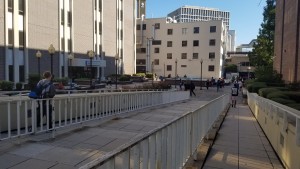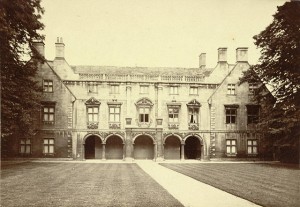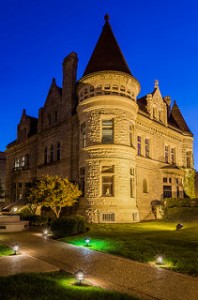The article “Recognizing Campus Landscapes as Learning Spaces” by Scholl and Gulwadi is published on the University of North Carolina Greensboro website under “Journal of Learning Spaces.” This, as well as the many citations, provide the ethos, or credibility, for the article. In the first paragraph of the article, the thesis is found, stating “we propose that the natural landscape of a university campus is an attentional learning resource for its students.” The article continues on to provide references, resources, and reasoning to support this thesis.

In the second and third paragraphs of the article, Scholl and Gulwadi explain what is expected of a university campus, such as how it looks and what it expresses (second paragraph) as well as why the campuses look and express what they do. The authors state that “the entire campus… must be perceived as a holistic learning space that provides a holistic learning experience” meaning the campus as a whole should be seen as promoting learning, not just the places designated for learning, like the classrooms and library. Scholl and Gulwadi express that this is what is expected of a campus and the way it is designed should reflect the holistic learning space.
Scholl and Gulwadi highlight two concepts to promote campus planning that will provide this holistic learning experience. “The concepts are- 1) direct and indirect attention and restoration, and 2) a holistic landscape” (paragraph 3). To promote these two concepts, Scholl and Gulwadi provide “Historical Context of the American College Campus” in relation to the open space of a campus and how it has evolved over time.

Paragraphs four through seven provide information regarding the evolution of the college campus and how “the physical campus of the land grant university was designed to significantly contribute to student learning” (paragraph 5) but then open space that was a part of these campuses were altered and taken up by the addition of more buildings and parking. The seventh paragraph goes on to explain the importance of open spaces in relation to both staff and students of the university.
Paragraphs eight through eleven communicate “Concepts of attention and ts impact on student learning.” The eighth paragraph explains the importance of “an active, experiential education versus passive or theoretical learning” and how the way a campus is designed relates to learning. The next two paragraphs, nine and ten, explain that learning requires a substantial amount of mental effort and that nature “can help to maintain or restore cognitive function” which is why open spaces and the design of a campus plays such a major role in promoting and providing a holistic learning environment and experience. This is because while learning takes mental focus and drains mental energy, enjoying nature and open spaces is subconscious, which means it does not require strict mental focus, allowing the mind to have a sort of break.

Paragraphs twelve through fifteen contain information about “Holistic landscapes for holistic learning” and Scholl and Gulwadi also provide a chart for reference about student interactions with nature in different parts of a campus setting. It also provides general estimates about land and open spaces for the average university campus in America. Paragraphs thirteen through fifteen describe the importance of open spaces in reference to restoring cognitive function for students and staff.
The final three paragraphs of the article contain the conclusion, which restates the thesis and draws in the overall claims of the article supporting the thesis. In the conclusion, Scholl, and Gulwadi explain that the two concepts (“1) direct and indirect attention and restoration, and 2) a holistic landscape” (paragraph 2)) “can occur by adopting a whole systems approach to campus design” to promote the idea of a campus as a whole as a learning space. Scholl and Gulwadi also provide a list of references used at the end of the article.
Citations:
SCHOLL, Kathleen G; GULWADI, Gowri Betrabet. Recognizing Campus Landscapes as Learning Spaces. Journal of Learning Spaces, [S.l.], v. 4, n. 1, july 2015. ISSN 21586195. Available at: <http://libjournal.uncg.edu/jls/article/view/972/777>. Date accessed: 07 oct. 2016.